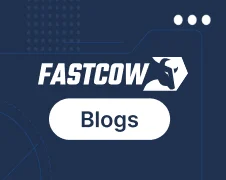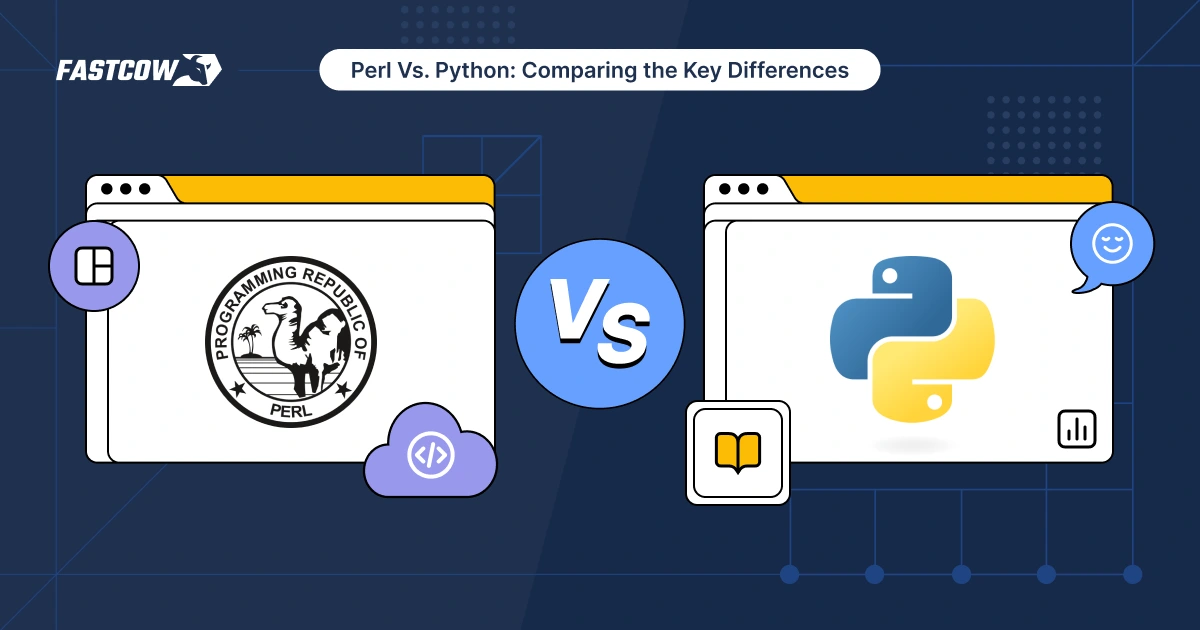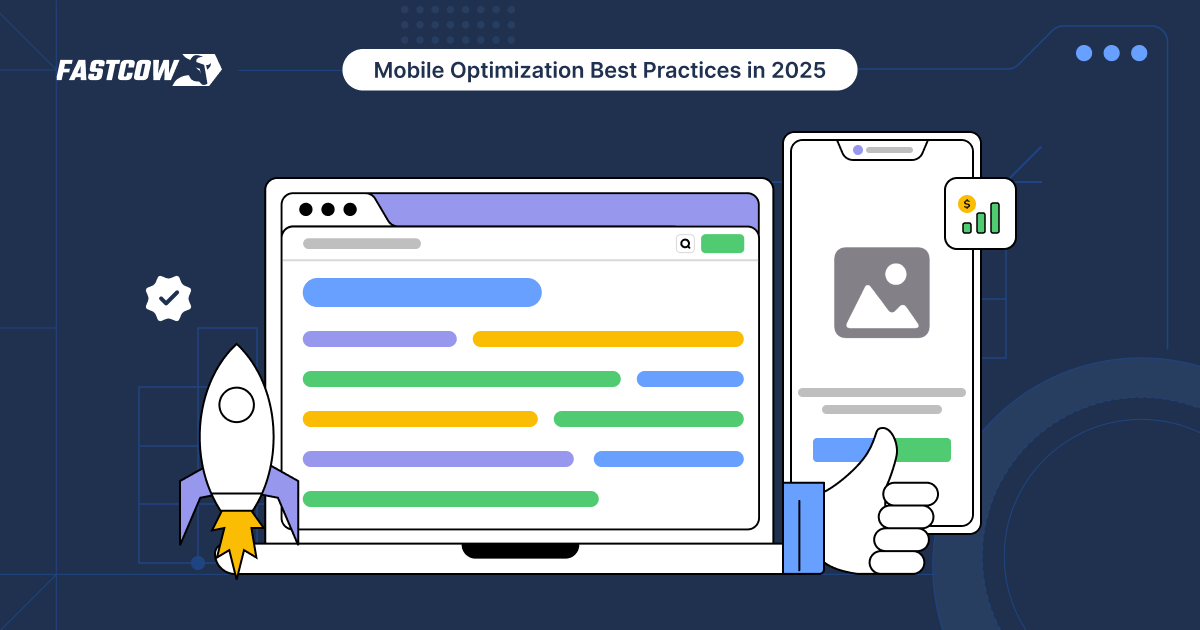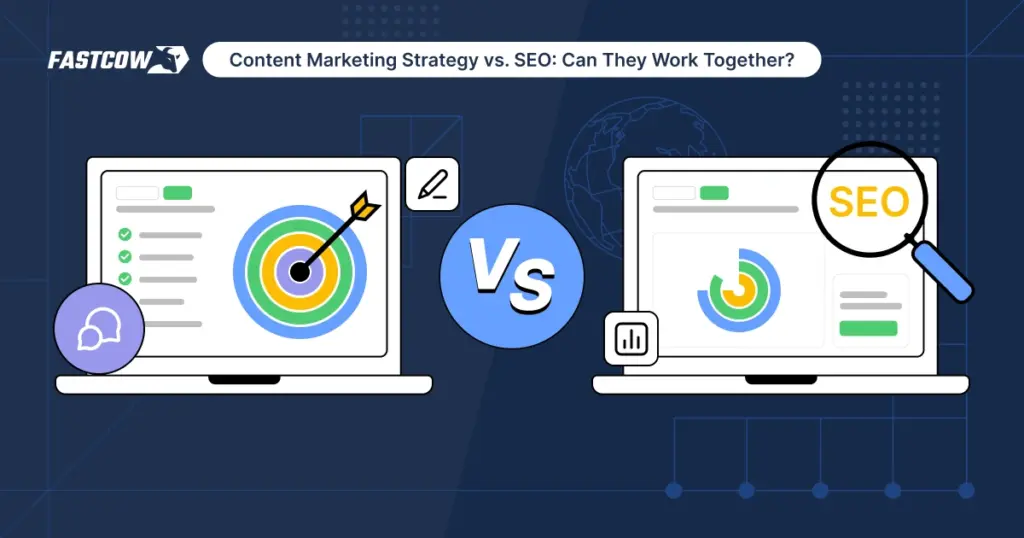
Not sure if you should double down on SEO strategy or lean into content marketing? You’re not alone. A lot of teams treat them like two separate strategies. Sometimes even as an either/or decision. But in practice, the line between content marketing strategies vs. SEO isn’t all that clear. Content needs visibility. SEO needs quality content. The two are tightly connected, even if they serve slightly different roles.
- What is SEO?
- What is Content Marketing?
- Content Marketing Strategy vs. SEO: Key Differences Explained
- How to Make SEO and Content Marketing Work Together Without Getting in Each Other’s Way
- How to Integrate Content Marketing with SEO?
- Cost Breakdown: Content Marketing Strategy vs. SEO
- Content Marketing vs. SEO: Which Strategy Fits Your Business Best?
- FAQs
In this blog, we’ll break down where content marketing ends and SEO begins (if it ever really does). And more importantly, we will see how using both together can help you grow in a way that’s actually sustainable.
Before comparing content marketing strategy vs. SEO, it’s important to first understand what each one really means.
Let’s start with SEO.
What is SEO?
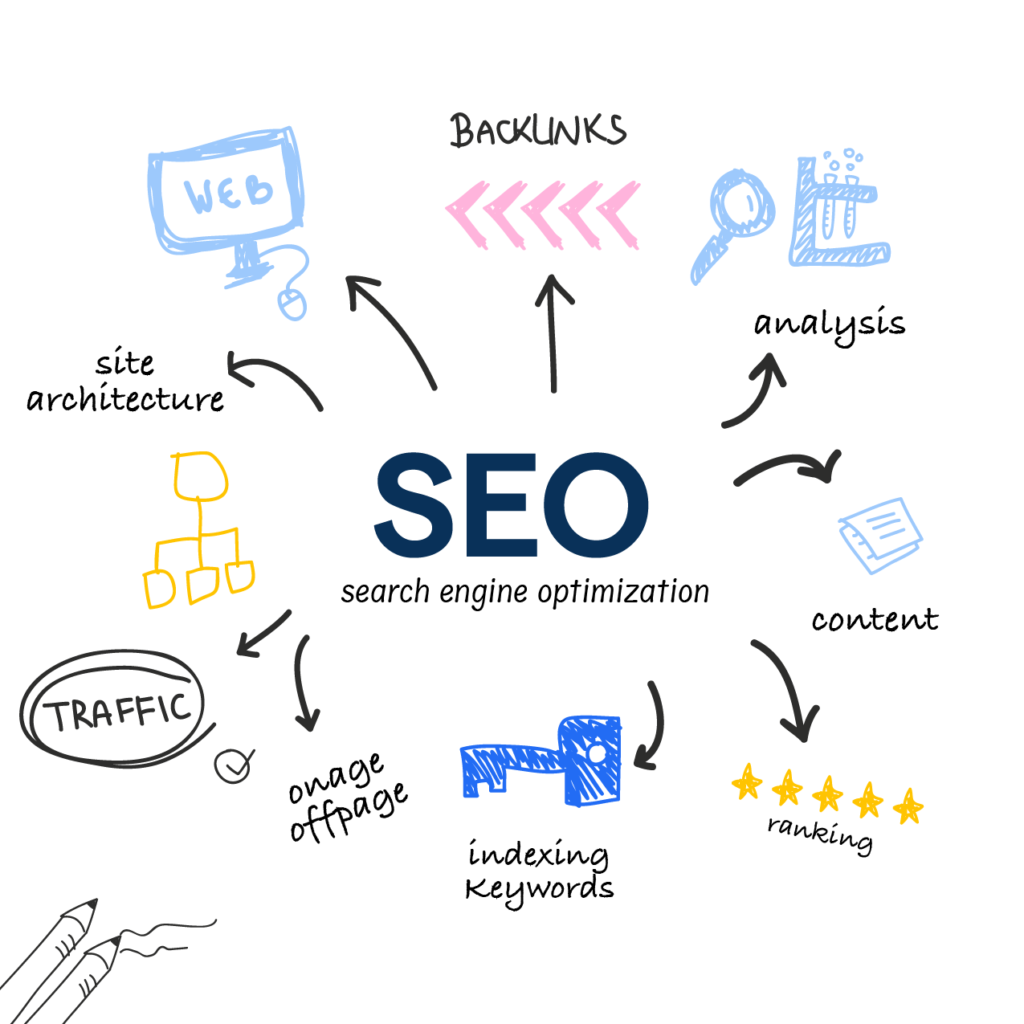
Search engine optimization (or SEO) is all about making your website easier to find when someone types a query into search engines, such as Google. However, it’s not just about showing up. It’s about showing up for the right people at the right time.
This process starts with knowing how search engines work. Google’s goal is to connect users with the most useful, relevant, and reliable answers. So, if your website loads fast, provides helpful content, works well on mobile, and earns trust from credible sources, it naturally becomes more visible in search results.
But SEO isn't one thing. It’s a combination of moving parts. Let’s break it down.
There are three key parts to SEO:
1. On-Page SEO
This is everything you control directly on your website. From how you structure content to the way you use headings and internal links, it all matters. Optimizing your Meta tags, using descriptive URLs, and keeping content readable helps both users and search engines understand what your pages are about.
2. Off-Page SEO
This deals with what happens beyond your site. Backlinks (when other websites link to your content) are a key example. Search engines see those links as votes of confidence. But not all links carry the same weight. Getting cited by a respected publication or industry blog carries more value than a random comment thread.
3. Technical SEO
This is about performance and structure. If your site takes too long to load or doesn't work on mobile, people bounce, and Google notices. Clean code, fast-loading pages, structured data, and mobile responsiveness all feed into the technical health of your website.
Also Read: Hosting and SEO: Key Insights to Boost Website Performance.
Now that we understand SEO strategy, let's define content marketing.
What is Content Marketing?
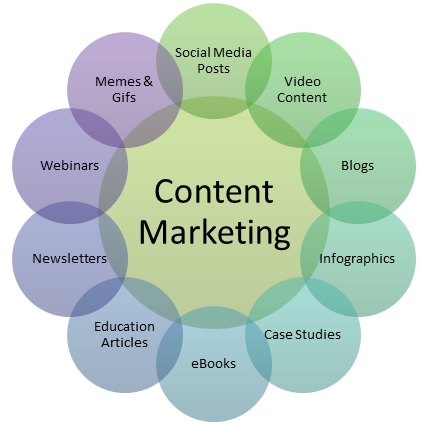
Content marketing is often misunderstood as just publishing blogs or pushing content for the sake of visibility. But it's much more intentional than that. It’s a long-term strategy focused on building trust, offering real value, and positioning your brand as a go-to resource in your space.
At its core, SEO content marketing strategy is the practice of creating and distributing relevant, helpful, and consistent content to attract and retain a clearly defined audience. The idea is to help people first, and when they’re ready to make a decision, your brand is already in their consideration set.
Let’s break down the key forms of content marketing today:
1. Website Content
This includes the foundational pages on your site, such as the About Us page, product descriptions, service details, and FAQs. While these may seem static, they play a huge role in helping visitors understand who you are, what you offer, and why they should trust you.
2. Blog Posts
These are often the backbone of most content strategies. Blogs allow you to explore specific topics, offer how-to guides, share opinions, and address common questions. They're also great for organic search visibility, especially when aligned with what your audience is actively looking for.
3. Social Media Posts
Quick, conversational, and often real-time, social content keeps your brand visible and approachable. Be it a behind-the-scenes video, running a poll, or offering a quick tip, social channels help you stay connected and relevant in everyday conversations.
4. Search Ads
Although paid, these often link back to content that’s meant to educate or inform. A well-placed ad leading to a helpful guide or resource page can attract the exact type of user looking for answers, and position your brand as the expert from the start.
5. Social Media Ads
These go beyond just brand awareness. When done right, they promote your most useful content, such as an eBook, video series, or webinar, to an audience that hasn't discovered you yet. It's less about selling, and more about offering value in exchange for attention.
6. Display Ads
These are more visual and can support a broader content campaign. For instance, a display ad promoting a free checklist or template on another relevant website helps draw in users who are already interested in your niche.
7. Email Campaigns
It is still one of the most direct and personal ways to engage your audience. Newsletters can do more than promote products. They can highlight blog posts, link to helpful videos, or offer exclusive insights that keep your audience informed and engaged.
8. Multimedia (Videos, Infographics, GIFs)
Not everyone likes to read. Some prefer watching a quick explainer video or scrolling through a visual breakdown of information. Using multimedia lets you meet different learning styles and can often help simplify dense topics in a way that sticks.
Content Marketing Strategy vs. SEO: Key Differences Explained
Now that we’ve covered the basics of SEO and content marketing, let’s discuss how they differ in function, structure, and purpose.
1. Technical vs. Narrative-Driven
SEO focuses on the technical health and visibility of your site. It covers keyword usage, site speed, mobile responsiveness, and link structures. It’s methodical. There’s a clear line between doing it right and missing the mark.
On the other hand, SEO content marketing revolves around storytelling and audience relevance. Rather than checking technical boxes, it’s about creating material that answers real questions, builds trust, and keeps readers engaged.
2. Defined Process vs. Open-Ended Strategy
SEO has a more structured process. You conduct keyword research, map content to search intent, optimize on-page elements, and monitor changes in rankings. The path is relatively linear.
Content marketing offers more flexibility. The creative process varies depending on the brand, the tone, and the format. One team may lean heavily on blog posts, another on videos or whitepapers. There’s no single route to follow.
3. Different Metrics, Different Wins
The way success is measured also separates the two. SEO performance is typically tracked using metrics like rankings, impressions, and organic traffic.
SEO content marketing measures engagement, time on page, shares, and leads generated. It’s less about being found and more about making an impact.
Bottom Line: They’re Better Together
These aren’t opposing forces. SEO helps people find your content, and an SEO content strategy gives them a reason to care. Without SEO, great content risks going unnoticed, and without good content, SEO won’t retain the audience it brings in.
Strong strategies bring both into the same conversation, not as competitors, but as partners.
How to Make SEO and Content Marketing Work Together Without Getting in Each Other’s Way
Understanding how content marketing strategy vs. SEO differs is just the first layer to uncover. The real value begins when both strategies stop operating in silos.
Remember, it’s about designing content that’s search-informed from the start.
The image below shows how a small shift in approach can help align both teams.
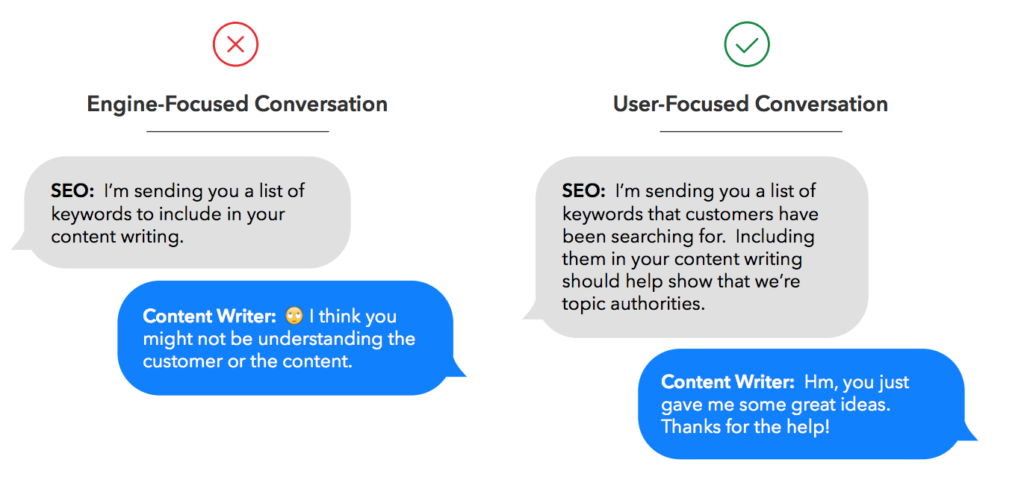
Here are different ways to make the two strategies work in tandem.
1. Let SEO Set the Direction and Not the Narrative
Good content answers a question or satisfies curiosity. SEO helps you figure out what those questions are. But here's the trap many teams fall into. They write around a keyword just to tick a box. That usually leads to hollow content no one remembers or links to.
Instead, pull data from SEO tools to spot search trends and intent gaps. Then, build content ideas from those insights. Not every topic with search volume deserves an article. Not every article needs a keyword-heavy title. Judgment matters here.
That’s where SEO content strategy does the heavy lifting. Choosing what not to write is just as important.
2. Design Content That Can Be Found Without Writing for a Robot
Search engines are much better at understanding context now than five years ago. Yet, many pages still sound like they were written for an algorithm. You’ll see forced repetitions, clunky phrasing, and headers that only exist to fit in a keyword.
A better approach is to write naturally but with structure. Use clean headings, answer one question per section, and don’t bury the key insight. If your piece is genuinely useful, it’s easier to optimize after writing instead of stuffing keywords from the start.
3. Connect Content Pieces into a Cohesive Topic Cluster
One-off blog posts rarely move the needle. What works better is a web of connected content that covers an entire topic thoroughly. Start with a main page that tackles the broad concept, then build supporting pieces around related subtopics.
This structure makes it easier for users to explore and helps search engines recognize your authority on the subject.
4. Don’t Let Content Go to Waste, Use SEO to Keep It Alive
Publishing is only half the job. If a piece was written six months ago and it’s lost traffic, figure out why. Rankings can drop for several reasons, including competitors updating their content, shifts in search behavior, or the page simply becoming outdated.
Have a process in place to revisit old content, refresh stats, update screenshots, rework intros, or reframe the angle. When done with SEO in mind, even small changes can bring a post back to life.
This is where SEO content strategy turns reactive and data-informed instead of just creative.
5. Use Link-Worthy Content to Earn Authority Instead of Asking for It
Every SEO playbook includes link building, but few explain how to earn links without cold outreach. The short answer? Create something people actually want to reference.
That usually means original insights, data-backed breakdowns, or thought leadership that adds something new to the conversation. Templates and listicles rarely earn serious backlinks on their own.
If your brand is publishing something others in your industry would cite in a presentation or quote in a report. Then, you’re doing it right.
6. Keep Content Readable, Not Just Crawlable
Technical SEO matters, but it can’t fix poorly written content. When pages load fast and pass Core Web Vitals, that’s great. But if your intro is vague and your layout’s a wall of text, readers won’t stay.
Use formatting to help. Write short paragraphs and descriptive subheadings, and place internal links where they make sense. Remember that a good user experience keeps both readers and crawlers happy.
7. Track Performance with Shared Metrics
The traffic is nice. So is ranking. But if neither leads to engagement or conversions, something's off. Use shared KPIs like bounce rate, time on page, and conversion rate to assess how well your SEO-content pairings are performing.
How to Integrate Content Marketing with SEO?
To make your digital marketing efforts truly work for you, it’s important to integrate content marketing with SEO. This isn’t just about sprinkling keywords into articles or slapping SEO tactics on your blog posts.
It's about ensuring both strategies work together to drive traffic, boost engagement, and convert leads.
Let’s explore how to smoothly integrate content marketing and SEO, and the steps you can take right now to make it happen.
1. Start with the Basics: Know Your Audience
You can't write content that resonates with your audience if you don’t know who they are. This is the foundation of SEO content marketing.
Tactics
- Data Collection: Use Google Analytics, surveys, and social media insights to gather data on your audience's interests and behaviors.
- Buyer Personas: Build detailed personas that capture the characteristics of your ideal customers. This will guide both your content creation and keyword targeting.
Tools
- Google Analytics (for audience insights)
- HubSpot’s Buyer Persona Tool
2. Set Clear, Measurable Goals
Both content marketing and SEO require clear objectives to track success. Without SMART goals, it’s difficult to know if you’re moving the needle.
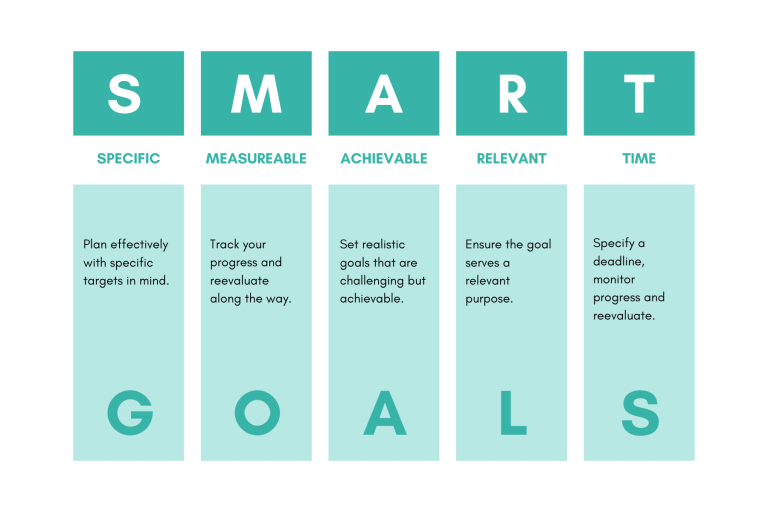
Tactics
- SEO Goal: You might aim to increase organic traffic by 20% over the next quarter.
- Content Marketing Goal: A realistic target could be driving 100 new leads through content within the next month.
Tools
- Google Analytics (for tracking traffic)
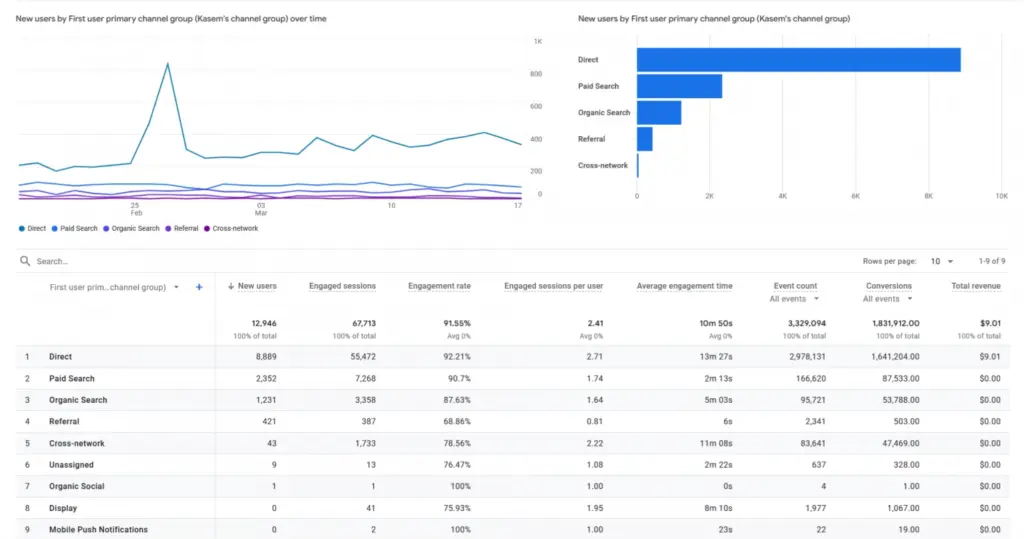
- SEMrush or Ahrefs (for keyword and ranking performance)
3. Keyword Research
Effective keyword research ensures your content hits the right notes for both your audience and search engines.
Tactics
- Keyword Research: Use tools like Ahrefs or SEMrush to find high-volume, low-competition keywords that match your audience’s search intent.
- Content Integration: Incorporate these keywords naturally in your content, without keyword stuffing.
Tools
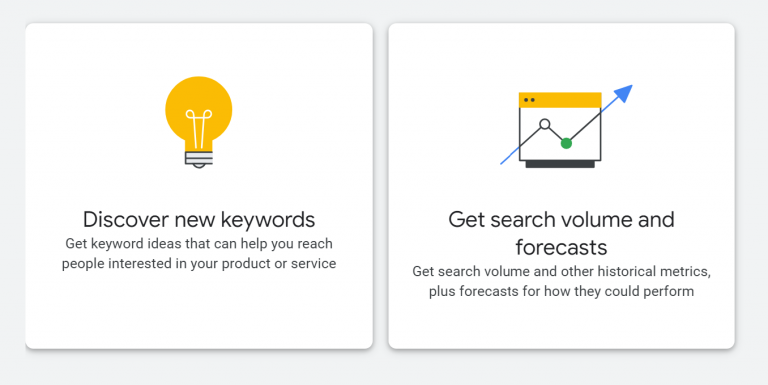
4. Content Audit: Identify What’s Working
Before adding new content, take a step back and evaluate your current content. What’s bringing in traffic? What’s not?
Tactics
- Use Google Analytics to find top-performing content and see which pages need optimization.
- Update old posts by refreshing content, optimizing for new keywords, or fixing broken links.
Tools
- Google Analytics (to track content performance)
- Screaming Frog (for SEO audits)
5. Create a Solid Content Calendar
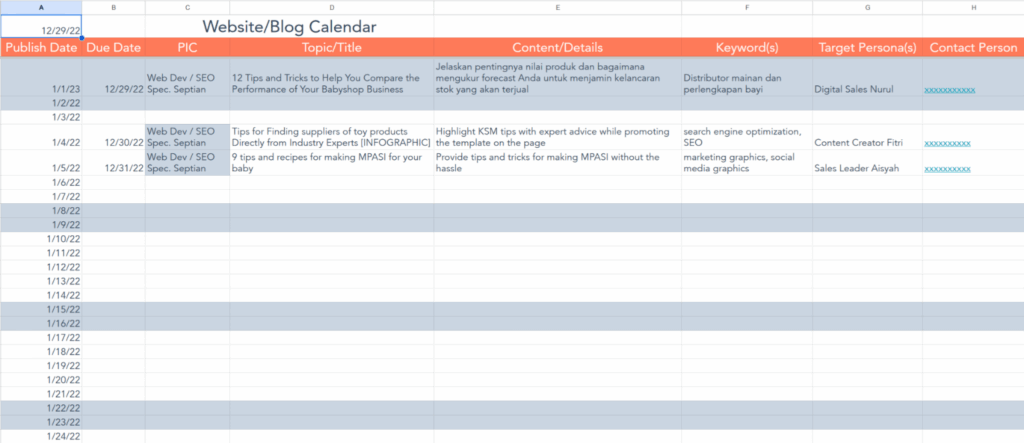
A content calendar helps you plan ahead and ensure you're producing content consistently aligned with both your SEO strategy and audience needs.
Tactics
- Plan content topics around target keywords and audience pain points.
- Schedule regular content reviews to ensure you're hitting SEO goals.
Tools
- Trello or Asana (for content management)
- Google Sheets (for editorial calendar)
6. Write Content that’s Both SEO-Friendly and Audience-Focused
This is where the magic happens. High-quality content that answers your audience's questions, solves their problems, and is optimized for search engines will get you noticed.
Tactics
- Focus on creating actionable and easy-to-read content that provides value.
- Use headings and subheadings (H1, H2, H3) to improve content structure and readability for both users and search engines.
Tools
- Grammarly (for grammar and readability checks)
- Yoast SEO (for on-page SEO optimization)
7. Optimize for Search Engines (Don’t Skip This Step)
Optimization is crucial. If your content isn’t optimized, it won’t rank. Simple as that.
Tactics
- Optimize for both on-page and technical SEO. This includes title tags, meta descriptions, image alt texts, and URL structure.
- Ensure mobile-friendliness and fast load times (both are critical ranking factors).
Tools
- Yoast SEO (for on-page SEO)
- Google PageSpeed Insights (for site speed)
8. Promote Content across Channels
Content promotion isn’t a one-and-done task. Promote your content on all relevant channels to boost its reach and drive traffic back to your site.
Tactics:
- Share content on social media, through email newsletters, and across partner sites.
- Repurpose content into different formats (like infographics, videos, or podcasts) to reach new audiences.
Tools:
- Buffer or Hootsuite (for social media scheduling)
- Mailchimp (for email marketing)
9. Build Backlinks to Boost Authority
Backlinks are one of the most important SEO ranking factors. The more high-quality sites link to your content, the more authority it gains.
Tactics
- Reach out to relevant sites and offer guest blog posts, data-backed studies, or original research in exchange for backlinks.
- Use tools like Ahrefs to track who is linking to your content and look for new opportunities.
Tools
- Ahrefs (for backlink analysis)
- Buzzsumo (to find link-building opportunities)
10. Measure, Refine, Repeat
Integrating SEO with content marketing isn’t a set-it-and-forget-it task. It’s an ongoing process. Measure your results, analyze what's working, and tweak your strategy as needed.
Final Tools
- Google Analytics (for performance tracking)
- Ahrefs (for SEO analysis)
- SEMrush (for competitor insights)
Applying these tactics and using the right tools ensure that your SEO and content marketing efforts complement each other. This will improve rankings, more organic traffic, and ultimately, better business outcomes.
Cost Breakdown: Content Marketing Strategy vs. SEO
Understanding the costs behind both content marketing and SEO helps set realistic expectations when planning your digital strategy.
Let's discuss how much each typically costs, and what you'll get for that investment.
What’s the Price Tag for Content Marketing?
Content marketing involves a broader approach and requires considerable investment to create high-quality content consistently. Expect to pay between $5,000 and $20,000 per month for a comprehensive SEO content marketing strategy.
This cost generally covers:
- Strategy development: Understanding your audience, defining goals, and outlining a roadmap.
- Content creation: Blog posts, social media content, email newsletters, and more.
- Content optimization: Ensure your content is optimized for user experience and search engines.
This investment goes towards creating meaningful, value-driven content that builds your brand’s credibility and engages your audience over time.
SEO Costs: What to Expect
SEO typically has a more predictable cost structure, with ongoing services ranging from $3,000 to $10,000 monthly. The pricing varies based on the competition, scope of services, and keywords you're targeting.
Monthly fees for local SEO (which focuses on specific geographic areas) are generally lower, ranging between $500 and $1,000.
However, the cost of one-time SEO projects, such as a complete site audit or major keyword overhaul, can range from $5,000 to $30,000.
You’ve seen how content marketing and SEO differ and how they can actually work hand in hand. So, the real question is whether you should go with one or combine both?
Let’s break it down.
Content Marketing vs. SEO: Which Strategy Fits Your Business Best?
Not all content marketing or SEO strategies work for every business. What’s important is aligning your approach with your business’s growth stage, target audience, and available resources.
Let’s break down how you can choose based on these factors.
1. Business Maturity
Where your business is in its journey should influence whether content marketing or SEO (or both) should take center stage.
- For Startups: You're building the foundation, so focus on SEO to ensure people find you. At the same time, start creating content that speaks directly to your niche audience. It's about targeting the right keywords and gradually increasing your visibility.
- For Growing Businesses: This is the sweet spot for a balanced strategy. You need both content marketing and SEO to drive results together. Content will help engage and inform your audience, while SEO ensures your efforts get seen by the right people at the right time.
- For Established Brands: If your brand has been around a while, you’ve likely already built some SEO momentum. Now, you can refine your strategy by integrating high-level content marketing with advanced SEO tactics. The goal here is sustainable and long-term growth.
2. Audience Type
Who you're trying to reach plays a drastic role in how you craft your content and optimize it for search engines.
- B2B (Business-to-Business): Content should focus on value and expertise. Whitepapers, detailed case studies, and insightful guides will work best here. SEO should target specific, high-intent keywords relevant to your industry to ensure you're discovered by decision-makers.
- B2C (Business-to-Consumer): Your content should tell stories and create emotional connections. Consider blogs, product descriptions, and social media posts that resonate with your audience on a personal level. SEO should support this by ensuring your brand appears when customers seek solutions like yours.
- Niche Markets: Serving a specialized audience requires highly targeted content. You’ll want to establish authority with expert-level insights and in-depth guides here. SEO should then be fine-tuned to help your specialized content reach those searching for exactly what you offer.
3. Available Resources
The resources you have (whether it’s a small team or a large marketing department) will help shape your strategy.
- Limited Budget: Focus on high-impact and cost-effective strategies if you're working with a smaller budget. Prioritize SEO to capture organic traffic and create efficient, valuable content that doesn't require a huge investment of time or money. Blog posts, social media updates, and emails are great ways to start.
- Large Team: You can explore a comprehensive and multi-channel strategy with more resources. Combine content marketing with advanced SEO to capture your audience on multiple fronts. Create content for various platforms and optimize it to maximize reach.
- Solo Entrepreneur: Efficiency is key if you’re running the show solo. Develop valuable but manageable content and pair it with basic SEO strategies to ensure your content gets discovered without overwhelming yourself.
Decision Matrix: When to Use Each Strategy
Here’s a quick decision matrix that helps clarify when to prioritize content marketing strategy vs. SEO:
| Business Goal | Primary Strategy | Secondary Strategy |
| Brand Authority | Content Marketing | SEO for visibility |
| Organic Traffic | SEO | Content for relevance |
| Lead Generation | Balanced Approach | Both equally vital |
| Quick Results | SEO (technical) | Content (social media) |
| Long-Term Growth | Content Marketing | SEO for sustainability |
Final Thoughts: Content Marketing vs. SEO
Content marketing is a mix of creativity, strategy, and execution. It’s important to think beyond just crafting great content. Your website's speed, uptime, and overall reliability are imperative in how your audience experiences your brand.
After all, if your website doesn't load fast or faces unexpected downtime, even the most compelling content can go unnoticed.
That’s why it’s worth considering a hosting provider that takes the technical details off your hands. FastCow delivers exactly that with its managed WordPress hosting service. We ensure your site is always running smoothly, quickly, and securely.
With one less thing to worry about, you can channel your energy into building your content and growing your audience. Click here to get started with FastCow and ensure your site is as reliable and fast as your content.
FAQs
Is there a way to tie SEO and content marketing together?
Absolutely. Start with solid keyword research to guide your content creation. Then, optimize that content for search engines by using the right technical SEO practices. This will ensure your valuable content is seen by your target audience.
How do SEO and PPC work together?
SEO and PPC can work synergistically. PPC ads give you instant visibility, while SEO builds long-term organic traffic. Together, they enhance your online presence, bringing in both immediate and sustained results.
Which is the best strategy, SEO or content marketing?
Both strategies should be integrated. SEO drives visibility for your content, and content marketing ensures you’re providing the value your audience is searching for. A balanced approach delivers more sustainable success.
What is the difference between content marketing and SEO?
Content marketing focuses on creating engaging and relevant content that meets your audience’s needs. SEO focuses on optimizing that content, improving search rankings, and increasing visibility in search engine results.
Which strategy is right for my business?
It depends on your business goals. If you want long-term organic traffic, SEO combined with content marketing works well. Adding PPC to the mix might also be effective if you need immediate traffic and visibility.
What are the benefits of combining SEO and content marketing?
Combining SEO and content marketing ensures that your content is discoverable and valuable to your audience. SEO helps bring the right people to your site, while strategic content addresses their needs, increases engagement, and drives more meaningful conversions.













